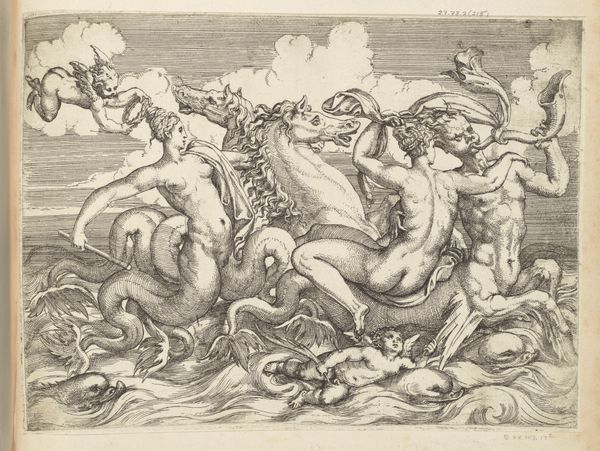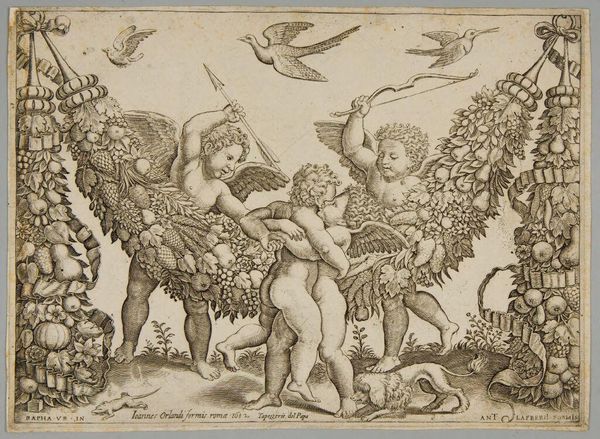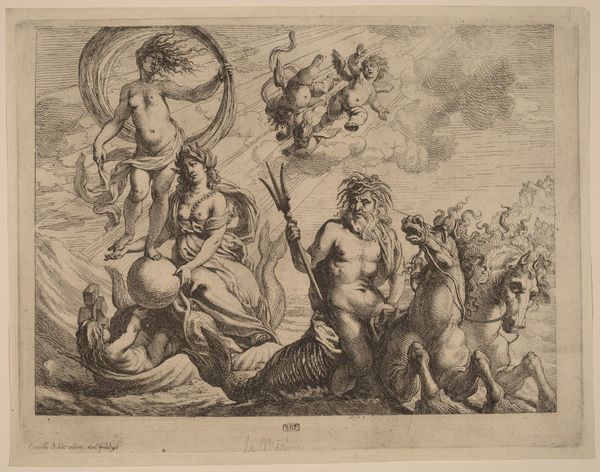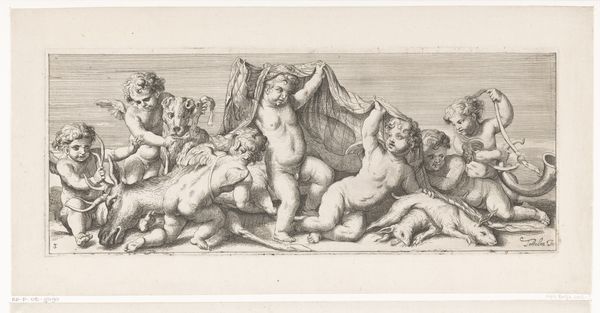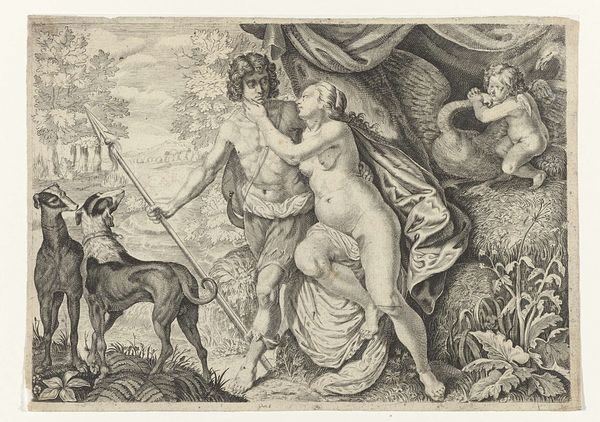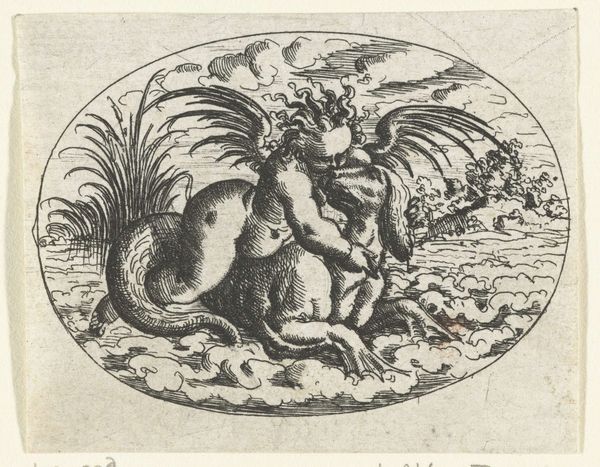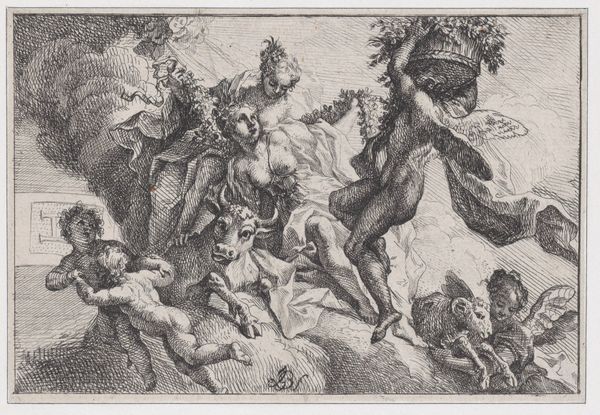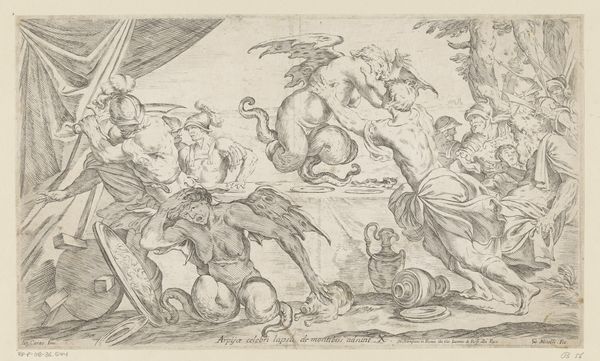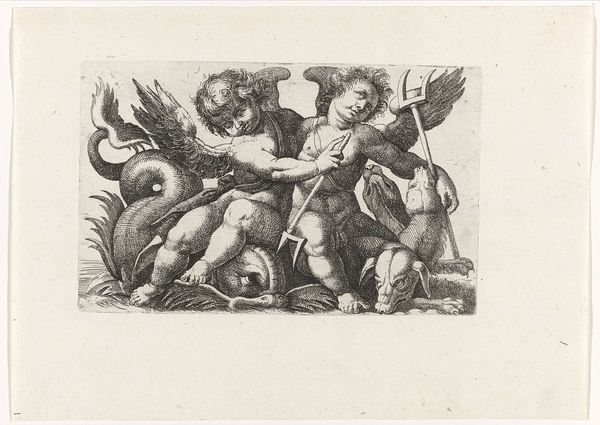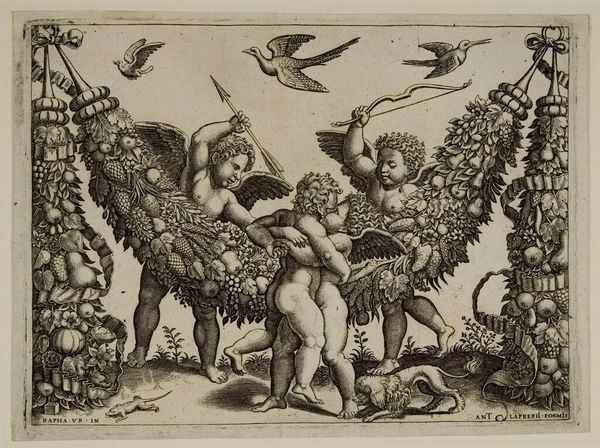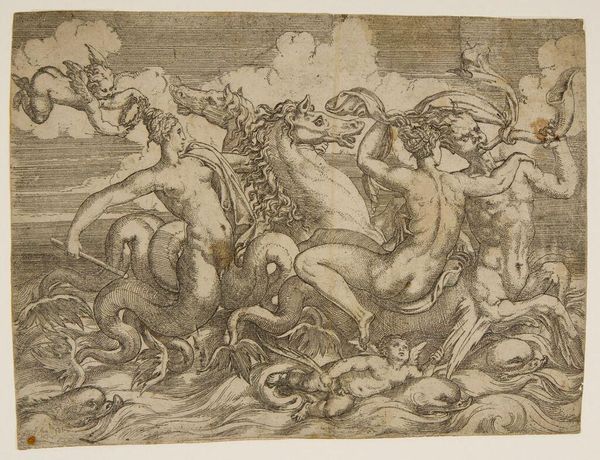
drawing, print, ink, engraving
#
drawing
#
ink drawing
#
allegory
#
pen drawing
# print
#
pen illustration
#
pen sketch
#
mannerism
#
figuration
#
11_renaissance
#
ink
#
history-painting
#
engraving
Dimensions: height 106 mm, width 177 mm
Copyright: Rijks Museum: Open Domain
Curator: What a fascinating print. This is "Putti en Hippocampussen," a work created somewhere between 1580 and 1610. The Rijksmuseum holds this engraving, which scholars attribute to Giovanni Andrea Maglioli. Editor: It's captivating, yet… strange. A sort of organized chaos. Muscular cherubs, these "putti," astride serpentine seahorses. Their expressions seem strained, even aggressive. There is tension apparent with all that ornate, yet ultimately anxious, line work. Curator: Absolutely. The Mannerist style is key here; you have these elongated figures, a deliberate departure from the Renaissance ideals of balance. It also emphasizes complex allegories, quite typical of the period's intellectual circles. Editor: And those allegories are rarely benign. Note how those seemingly innocent putti wield these, dare I say, instruments of power. The trident, a symbol of dominion over the seas, rests prominently with its owner. What societal messages were intended regarding early modern ideas of freedom, dominance, and privilege? Curator: Precisely! It’s fascinating to consider the function of prints like this, they weren't merely decorative. These images were circulated widely, disseminating ideas and often serving as propaganda or visual arguments within the social and political landscape. It's critical to acknowledge, of course, who had access to, and controlled, this information stream. Editor: Considering our moment, the symbolism feels unsettling. Winged beings atop fantastical beasts wielding control - it speaks volumes about historical structures of authority, a theme which regrettably is constantly resonant through to modern forms of privilege. This historical art presents enduring issues which must always challenge our perceptions and ideas. Curator: I agree entirely. It forces us to consider how those visual languages perpetuate ideas of power. A piece like this reminds us that art always operates within, and helps to constitute, existing power dynamics. It serves not just aesthetic purposes but is involved deeply in a social setting. Editor: This piece shows its deep understanding of both historical context and political thought, reminding viewers to question the legacy it portrays. Curator: Thank you, these additional layers help see Giovanni Maglioli's piece for its deeper context.
Comments
No comments
Be the first to comment and join the conversation on the ultimate creative platform.
